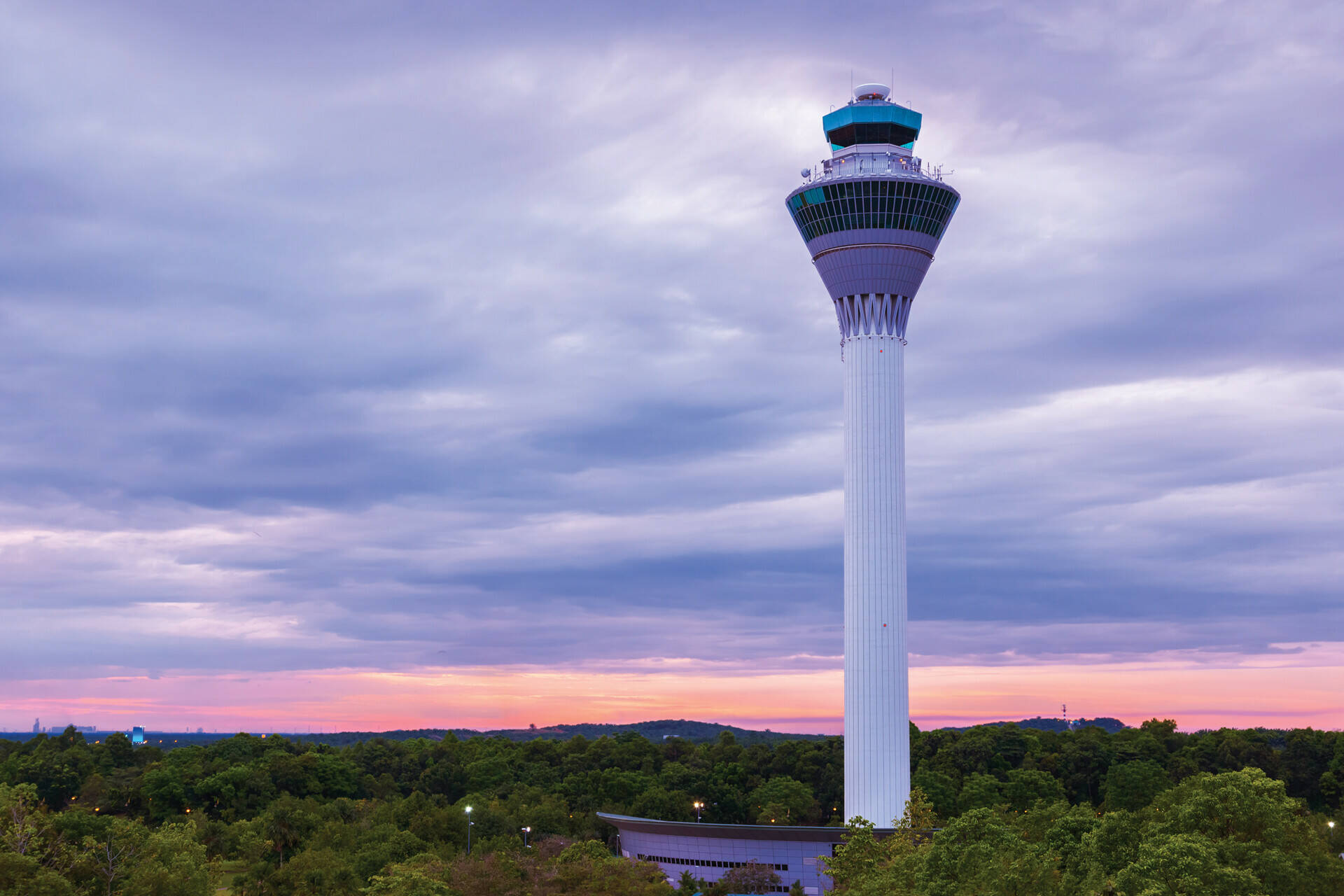


Are you confident the industry can attract enough staff to cope with future growth?
Although challenges exist, the aviation industry has historically demonstrated resilience and adaptability. Successful workforce planning, collaboration, and strategic initiatives can help address staffing needs and support sustainable growth.
As a basic rule, we need to offer competitive compensation and attractive benefits packages, including addressing the work-life balance, offering career progression opportunities and supporting employee well-being.
Robust training and development programmes will support this. These programmes should not only focus on technical skills but also on soft skills and adaptability.
And, of course, promoting diversity and inclusion in the aviation workforce will broaden the talent pool. Encouraging individuals from diverse backgrounds and empowering women to pursue careers in aviation enhances the industry’s resilience and innovation.
Improving the public perception of careers in aviation and actively promoting the industry as an attractive and dynamic field can contribute to increased interest from potential candidates, particularly as the industry continues to recover from the pandemic.
Can ANSPs do more to help the industry achieve its goal of net zero carbon emission by 2050?
Yes, of course. I believe that the contribution of ANSPs will be vital for the aviation industry to meet this ambitious goal. As I mentioned earlier, collaboration is key. This means that we should work together with airlines and aircraft operators as well as regulatory bodies to make an impact. Sharing crucial data on fuel consumption and emissions, for example, could allow all relevant stakeholders to identify and implement sustainable practices across the aviation sector.
As ANSPs we can also contribute to achieving the net zero carbon goal by focusing on enhancing our overall operational efficiency and investing in green infrastructure. I believe, that if we invest in cutting-edge technologies, such as fuel-efficient aircraft separation standards, advanced CNS, best practices for fuel efficiency and emissions reduction, we can positively contribute to the ongoing improvement of our industry,
Other than that, we could also look into switching to greener tools such as electric ground support equipment, solar-powered facilities and energy-efficient buildings to minimise the ecological footprint of aviation operations.
As ANSPs there are various other measures we can take to positively contribute to the net zero goal such as optimising air traffic management. We can enhance fuel efficiency and reduce emissions by implementing more efficient routing and airspace management.
How do you evaluate the benefits of new technologies and is any increase in safety or efficiency worth the cost of a new system?
Basically, evaluating new technologies requires a thorough cost-benefit analysis to weigh up the financial investment against the anticipated benefits, including not only the initial costs but also maintenance, training, and potential future upgrades.
But there are several other key points. Obviously, one aspect is safety enhancement. We must assess how the new technology contributes to overall safety in air traffic operations and examine its capability to prevent accidents, mitigate risks, and enhance situational awareness for both controllers and pilots.
Operational efficiency must also be considered. Reducing delays, optimising flight paths, and minimising fuel consumption are all important factors, as are the impact on overall airspace and airport capacity and the ability to handle increased air traffic.
The new technology must also be compatible and interoperable with existing systems and future developments in ATM, and it must be scalable without compromising performance. Sustainability is important too, as is regulatory compliance. You must think about the potential need for regulatory approvals and the impact on international standards and procedures.
Finally human factors should also be a consideration, especially the impact on decision making, reliability and the level of collaboration and support you’ll need from industry stakeholders.
Ultimately, the decision to adopt a new technology in ATM should be based on a holistic evaluation of its benefits, costs and potential impact on safety and efficiency. Regular reviews and updates to assess the technology’s performance in real world conditions are also crucial for ongoing improvement.
Are you concerned about how to integrate new airspace users and what role should ANSPs play?
Yes, the integration of these key players would definitely raise some concerns for ATM, not least around safety. Ensuring the safe coexistence of traditional and new airspace users is a primary concern. Different vehicles may have varying operational characteristics and requirements, and this will require robust safety measures.
Establishing clear and comprehensive regulations for the operation of new airspace users is also crucial. This includes defining rules for different categories of vehicles, flight altitudes and airspace access.
Integrating diverse airspace users will also require effective airspace management strategies. Defining specific corridors, altitudes and separation standards for different types of vehicles is essential to prevent conflicts.
Then there’s communicating with these new vehicles. New airspace users may use different communication and navigation systems. Ensuring compatibility and effective communication between all the vehicles in our skies and with air traffic controllers is vital for maintaining safety and efficiency.
We also need to ensure we have the necessary ground infrastructure to support the operations of new airspace users. This includes the establishment of vertiports or droneports, as well as the integration of charging or refuelling stations.
Addressing security concerns related to unauthorised drone activities will be of primary concern. ANSPs may need to implement counter-drone measures to mitigate the risks associated with potential misuse.
Finally, the training of air traffic controllers, drone operators, and other relevant personnel on the unique characteristics and requirements of new airspace users is essential. This helps ensure that all parties involved understand and adhere to the established regulations.
Needless to say, the role of ANSPs in this context is pivotal. ANSPs play a central role in coordinating and managing air traffic to ensure safety and efficiency. Our responsibilities include developing and implementing procedures and standards for the integration of new airspace users and providing real-time monitoring and management of airspace to prevent conflicts.
ANSPs will also need to collaborate with regulatory bodies to establish and update rules for different types of vehicles and conduct training programmes for air traffic controllers and other personnel to handle the unique aspects of new airspace users.
Collaboration is the key. ANSPs will need to share data for an efficient and seamless handover and work together with industry stakeholders to establish best practices.



CEO, Civil Aviation Authority of Malaysia (CAAM)
Dato’ Captain Norazman Bin Mahmud




CEO, Civil Aviation Authority of Malaysia (CAAM)

Dato’ Captain Norazman Bin Mahmud


Yes, the integration of these key players would definitely raise some concerns for ATM, not least around safety. Ensuring the safe coexistence of traditional and new airspace users is a primary concern. Different vehicles may have varying operational characteristics and requirements, and this will require robust safety measures.
Establishing clear and comprehensive regulations for the operation of new airspace users is also crucial. This includes defining rules for different categories of vehicles, flight altitudes and airspace access.
Integrating diverse airspace users will also require effective airspace management strategies. Defining specific corridors, altitudes and separation standards for different types of vehicles is essential to prevent conflicts.
Then there’s communicating with these new vehicles. New airspace users may use different communication and navigation systems. Ensuring compatibility and effective communication between all the vehicles in our skies and with air traffic controllers is vital for maintaining safety and efficiency.
We also need to ensure we have the necessary ground infrastructure to support the operations of new airspace users. This includes the establishment of vertiports or droneports, as well as the integration of charging or refuelling stations.
Addressing security concerns related to unauthorised drone activities will be of primary concern. ANSPs may need to implement counter-drone measures to mitigate the risks associated with potential misuse.
Finally, the training of air traffic controllers, drone operators, and other relevant personnel on the unique characteristics and requirements of new airspace users is essential. This helps ensure that all parties involved understand and adhere to the established regulations.
Needless to say, the role of ANSPs in this context is pivotal. ANSPs play a central role in coordinating and managing air traffic to ensure safety and efficiency. Our responsibilities include developing and implementing procedures and standards for the integration of new airspace users and providing real-time monitoring and management of airspace to prevent conflicts.
ANSPs will also need to collaborate with regulatory bodies to establish and update rules for different types of vehicles and conduct training programmes for air traffic controllers and other personnel to handle the unique aspects of new airspace users.
Collaboration is the key. ANSPs will need to share data for an efficient and seamless handover and work together with industry stakeholders to establish best practices.
Are you concerned about how to integrate new airspace users and what role should ANSPs play?
Basically, evaluating new technologies requires a thorough cost-benefit analysis to weigh up the financial investment against the anticipated benefits, including not only the initial costs but also maintenance, training, and potential future upgrades.
But there are several other key points. Obviously, one aspect is safety enhancement. We must assess how the new technology contributes to overall safety in air traffic operations and examine its capability to prevent accidents, mitigate risks, and enhance situational awareness for both controllers and pilots.
Operational efficiency must also be considered. Reducing delays, optimising flight paths, and minimising fuel consumption are all important factors, as are the impact on overall airspace and airport capacity and the ability to handle increased air traffic.
The new technology must also be compatible and interoperable with existing systems and future developments in ATM, and it must be scalable without compromising performance. Sustainability is important too, as is regulatory compliance. You must think about the potential need for regulatory approvals and the impact on international standards and procedures.
Finally human factors should also be a consideration, especially the impact on decision making, reliability and the level of collaboration and support you’ll need from industry stakeholders.
Ultimately, the decision to adopt a new technology in ATM should be based on a holistic evaluation of its benefits, costs and potential impact on safety and efficiency. Regular reviews and updates to assess the technology’s performance in real world conditions are also crucial for ongoing improvement.
How do you evaluate the benefits of new technologies and is any increase in safety or efficiency worth the cost of a new system?
Yes, of course. I believe that the contribution of ANSPs will be vital for the aviation industry to meet this ambitious goal. As I mentioned earlier, collaboration is key. This means that we should work together with airlines and aircraft operators as well as regulatory bodies to make an impact. Sharing crucial data on fuel consumption and emissions, for example, could allow all relevant stakeholders to identify and implement sustainable practices across the aviation sector.
As ANSPs we can also contribute to achieving the net zero carbon goal by focusing on enhancing our overall operational efficiency and investing in green infrastructure. I believe, that if we invest in cutting-edge technologies, such as fuel-efficient aircraft separation standards, advanced CNS, best practices for fuel efficiency and emissions reduction, we can positively contribute to the ongoing improvement of our industry,
Other than that, we could also look into switching to greener tools such as electric ground support equipment, solar-powered facilities and energy-efficient buildings to minimise the ecological footprint of aviation operations.
As ANSPs there are various other measures we can take to positively contribute to the net zero goal such as optimising air traffic management. We can enhance fuel efficiency and reduce emissions by implementing more efficient routing and airspace management.
Can ANSPs do more to help the industry achieve its goal of net zero carbon emission by 2050?
Although challenges exist, the aviation industry has historically demonstrated resilience and adaptability. Successful workforce planning, collaboration, and strategic initiatives can help address staffing needs and support sustainable growth.
As a basic rule, we need to offer competitive compensation and attractive benefits packages, including addressing the work-life balance, offering career progression opportunities and supporting employee well-being.
Robust training and development programmes will support this. These programmes should not only focus on technical skills but also on soft skills and adaptability.
And, of course, promoting diversity and inclusion in the aviation workforce will broaden the talent pool. Encouraging individuals from diverse backgrounds and empowering women to pursue careers in aviation enhances the industry’s resilience and innovation.
Improving the public perception of careers in aviation and actively promoting the industry as an attractive and dynamic field can contribute to increased interest from potential candidates, particularly as the industry continues to recover from the pandemic.
Are you confident the industry can attract enough staff to cope with future growth?